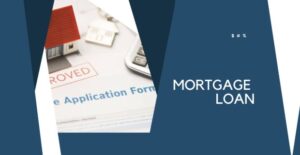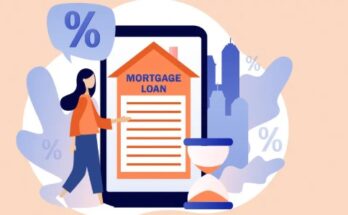Common Mortgage Mistakes and How to Avoid Them-2025
Grasping the Basics of Mortgages
Understanding the basics of mortgages is a crucial first step before starting the application process. A mortgage is a type of loan used to purchase real estate, where the property serves as collateral. Essentially, this means that if you fail to repay the loan, the lender has the right to take ownership of the property.
Mortgages are typically repaid over a long period, commonly 15 to 30 years, through monthly installments that include both the principal and interest. The principal is the amount you initially borrow, while the interest is the cost of borrowing that money. Understanding this distinction is key, as it affects how much you end up paying over the life of the loan.
Another essential component to grasp is the mortgage interest rate, which can be either fixed or adjustable. A fixed-rate mortgage has an interest rate that remains constant throughout the loan term, providing stable and predictable monthly payments. In contrast, an adjustable-rate mortgage (ARM) has an interest rate that can change periodically, usually in relation to an index. While ARMs often start with lower interest rates, they come with the risk that your payments could increase significantly over time.

It’s also important to be aware of the loan term. The term of your mortgage affects both your monthly payments and the total amount of interest you’ll pay over the life of the loan. Shorter terms generally mean higher monthly payments but less interest paid overall, while longer terms lower your monthly payments but result in more interest paid over time.
When you apply for a mortgage, lenders will evaluate your creditworthiness based on various factors, including your credit score, income, employment history, and debt-to-income ratio. A strong credit score and stable income can improve your chances of getting approved and securing a favorable interest rate.
In addition to the mortgage itself, you should be prepared for other costs associated with buying a home. These include down payments, closing costs, property taxes, and homeowners insurance. The down payment is a percentage of the home’s purchase price that you pay upfront, while closing costs cover various fees for services like appraisals and title searches.
Mortgage insurance may also come into play if your down payment is less than 20% of the home’s value. This insurance protects the lender in case you default on the loan but adds an extra cost to your monthly payments.
Lastly, consider the amortization schedule, which outlines how your loan will be paid off over time. Early in the loan term, a larger portion of your monthly payment goes toward interest, while later on, more of it goes toward paying down the principal. Understanding this schedule can help you see how your payments are allocated and plan accordingly.
Selecting the Appropriate Mortgage Type
Choosing the right type of mortgage requires careful consideration of your financial situation and long-term plans. The two primary options are fixed-rate and adjustable-rate mortgages (ARMs).
A fixed-rate mortgage offers a stable interest rate for the entire loan term. This means your monthly payments will remain consistent, making it easier to budget and plan for the future. Fixed-rate mortgages are generally preferred by those who intend to stay in their home for an extended period, as they provide protection against interest rate fluctuations. The predictability of fixed-rate mortgages can offer peace of mind, even though the initial interest rate might be higher compared to ARMs.
On the other hand, adjustable-rate mortgages come with an interest rate that can change after an initial fixed period. For example, a 5/1 ARM will have a fixed rate for the first five years, after which the rate can adjust annually based on an index. The initial rate for an ARM is usually lower than that of a fixed-rate mortgage, making it attractive to those who plan to move or refinance within a few years. However, the potential for rate increases means that monthly payments could rise, adding an element of uncertainty.
When selecting between these options, consider how long you plan to stay in the home and your comfort level with potential payment changes. If you have a stable job and anticipate staying put, a fixed-rate mortgage might be the safer bet. Conversely, if you expect your financial situation to improve or plan to relocate, an ARM could save you money in the short term.
Additionally, it’s crucial to understand the specifics of how ARMs adjust. The terms of adjustment, caps on rate increases, and the index to which the ARM is tied can all impact how your payments change over time. Some ARMs have caps that limit the amount the interest rate can increase during each adjustment period or over the life of the loan. These caps provide some protection but don’t eliminate the risk entirely.
Each mortgage type has its pros and cons, and the best choice depends on your unique circumstances. Consulting with a mortgage advisor can help clarify which option aligns best with your financial goals and risk tolerance. Careful evaluation of your current financial health and future plans will guide you toward the mortgage type that best suits your needs.
Frequent Errors During the Mortgage Application Process
The mortgage application process can be complex, and there are several common pitfalls to watch out for. One critical mistake is overlooking the importance of pre-approval. Getting pre-approved not only gives you an idea of how much you can borrow but also shows sellers you’re a serious buyer. Skipping this step can lead to disappointment if you fall in love with a home outside your budget.
Another frequent error is ignoring the impact of your credit score on interest rates. Lenders use your credit score to determine your loan eligibility and the interest rate they’ll offer. A higher credit score can secure you a lower rate, saving you thousands over the life of the mortgage. It’s essential to review your credit report, address any discrepancies, and improve your score before applying.
Some applicants make the mistake of not shopping around for the best mortgage terms. Interest rates, fees, and loan terms can vary significantly between lenders. Comparing offers from multiple lenders can help you find the most favorable terms and potentially save you a substantial amount of money over the life of the loan.
Failing to account for all home-buying costs is another common oversight. Beyond the mortgage itself, there are down payments, closing costs, property taxes, and homeowners insurance to consider. Not budgeting for these additional expenses can lead to financial strain and affect your ability to maintain homeownership comfortably.
Some buyers also make the mistake of changing their financial situation during the application process. Making large purchases, opening new credit accounts, or changing jobs can alter your financial profile and jeopardize your mortgage approval. Lenders re-evaluate your financial status before finalizing the loan, so it’s crucial to maintain stability during this period.
Another error is not understanding the different mortgage options available. For example, while fixed-rate mortgages offer stability, adjustable-rate mortgages can offer lower initial rates but come with the risk of rate increases. Choosing the wrong type of mortgage for your financial situation and future plans can lead to higher costs and financial stress.
Finally, miscommunication with your lender can result in delays or errors in your application. Failing to promptly provide requested documentation or not fully understanding the terms of your mortgage can lead to complications. Regular communication with your lender and ensuring you understand every aspect of your loan agreement is essential for a smooth process.
Budgeting and Affordability Traps
Many buyers find themselves caught off guard by the additional expenses that come with homeownership. While the mortgage payment is a significant part of the budget, it’s not the only cost you’ll face. Property taxes can vary widely depending on your location, and homeowners insurance is a necessity that provides financial protection against potential damages. Additionally, ongoing maintenance and repairs are inevitable and should be factored into your monthly and annual budgets. Failing to consider these costs can strain your finances and make it challenging to keep up with all your homeownership responsibilities.
One common trap is overestimating how much house you can afford based on your current income and expenses. It’s essential to take a realistic look at your financial situation, including any debt obligations, living expenses, and savings goals. A common guideline is to keep your housing costs—including mortgage payments, property taxes, and insurance—within 28% to 30% of your gross monthly income. Exceeding this percentage can make it difficult to manage other financial commitments and reduce your ability to save for future needs.
It’s also important to consider your long-term financial stability. Life is full of unexpected changes, whether it’s a job loss, a medical emergency, or a significant life event like starting a family. These changes can impact your ability to make consistent mortgage payments. Building an emergency fund with at least three to six months’ worth of living expenses can provide a cushion in case your financial situation changes suddenly. This fund can help you cover your mortgage and other essential costs during difficult times, giving you peace of mind.
Another potential pitfall is underestimating the impact of interest rate changes on your mortgage payments, especially if you have an adjustable-rate mortgage (ARM). While ARMs often start with lower rates, those rates can increase over time, potentially leading to higher monthly payments. Make sure to understand how your mortgage terms can change and plan for potential increases in your budget.
Moreover, some buyers neglect to account for homeowners association (HOA) fees if they purchase a property in a community with shared amenities and services. HOA fees can add a significant amount to your monthly expenses, so it’s crucial to include these in your budgeting process.
Lastly, it’s easy to become financially stretched by taking on additional debt after securing your mortgage. Avoid making large purchases or taking on new loans that could compromise your ability to meet your mortgage obligations. Keeping your debt-to-income ratio low will help maintain financial stability and ensure that you can comfortably afford your home in the long run.
Missteps When Finalizing the Mortgage
As you near the completion of your mortgage process, it’s crucial to stay vigilant to avoid common missteps. One critical area is the final review of all your documents. Carefully examine every detail, ensuring that the loan amount, interest rate, and loan term are exactly what you agreed upon. If you spot any discrepancies, address them with your lender immediately to prevent future complications.
Another important aspect to consider is understanding the exact breakdown of your closing costs. These costs can be substantial, typically ranging from 2% to 5% of the home’s purchase price. They encompass various fees, including those for appraisals, title insurance, and legal expenses. It’s essential to budget for these costs and to clarify any uncertainties with your lender to avoid unexpected financial strain at the closing table.
Communication with your lender is vital during this final stage. Make sure all required documents are submitted promptly and accurately. Delays or errors in documentation can postpone your closing date, causing unnecessary stress and potential financial penalties. Regularly check in with your lender to ensure everything is on track.
It’s also wise to refrain from making any significant financial changes before your loan closes. Avoid large purchases, new credit accounts, or job changes, as these can alter your financial profile and jeopardize your mortgage approval. Lenders re-evaluate your financial status right before finalizing the loan, so maintaining stability is crucial.

Lastly, have a clear understanding of your post-closing responsibilities. Know when and where your first mortgage payment is due and set up any necessary accounts for property taxes and homeowners insurance. Being organized and prepared will help you start your homeownership journey smoothly.
By staying attentive and proactive during the final stages of the mortgage process, you can avoid common pitfalls and ensure a successful closing. This careful attention to detail will help you secure a mortgage that aligns with your financial goals, paving the way for a more secure and enjoyable homeownership experience.



